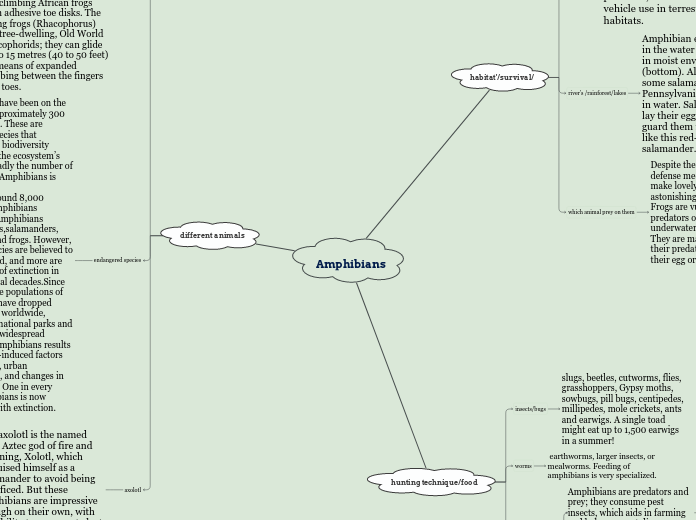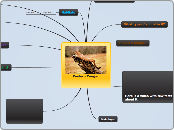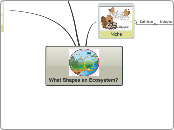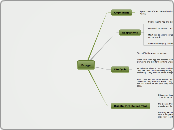Amphibians
This template is designed to help you with studying for an exam or qualification. The ideas behind it are described in this article together with tips and suggestions for study techniques.
Begin by typing in the name of the subject that you are studying.
different animals
Map out what you already know about this subject. This will help you to connect new learning with previous knowledge.
axolotl
the axolotl is the named after Aztec god of fire and lightning, Xolotl, which disguised himself as a salamander to avoid being sacrificed. But these amphibians are impressive enough on their own, with the ability to regenerate lost limbs and stay “young” throughout their lives.
endangered species
Amphibians have been on the planet for approximately 300 million years. These are intriguing species that contribute to biodiversity balance and the ecosystem’s health, but sadly the number of Endangered Amphibians is increasing.
There are around 8,000 species of Amphibians worldwide. Amphibians include newts,salamanders, caecilians, and frogs. However, over 120 species are believed to have vanished, and more are on the verge of extinction in the last several decades.Since the 1950s, the populations of amphibians have dropped substantially worldwide, including in national parks and forests. This widespread decrease of amphibians results from human-induced factors from logging, urban development, and changes in their habitat. One in every three amphibians is now threatened with extinction.
frogs
In general, frogs have protruding eyes, no tail, and strong, webbed hind feet that are adapted for leaping and swimming. They also possess smooth, moist skins. Many are predominantly aquatic, but some live on land, in burrows, or in trees. A number depart from the typical form. Sedge frogs (Hyperolius), for example, are climbing African frogs with adhesive toe disks. The flying frogs (Rhacophorus) are tree-dwelling, Old World rhacophorids; they can glide 12 to 15 metres (40 to 50 feet) by means of expanded webbing between the fingers and toes.
hunting technique/food
Add resources that will help your studies in the topics below.
ways they hunt
Who can help you with this subject? Think about lecturers, tutors, experienced colleagues, other students, or people who have taken this qualification before.
l
All adult amphibians are meat-eating predators. Their prey includes insects, slugs, worms, and even small mammals, such as mice. Aquatic amphibians eat water snails, insects, and small fish. Many amphibians hunt at night, using their sharp sight, smell, and hearing to track victims.
Amphibians are predators and prey; they consume pest insects, which aids in farming and helps prevent disease transmission.
Occupation
worms
Try to find previous test papers, and read them early to understand how the syllabus is interpreted.
earthworms, larger insects, or mealworms. Feeding of amphibians is very specialized.
insects/bugs
If you have been given a reading list, map it out below, and add any other relevant publications such as professional journals, published papers, conference proceedings, webinars, and other books.
slugs, beetles, cutworms, flies, grasshoppers, Gypsy moths, sowbugs, pill bugs, centipedes, millipedes, mole crickets, ants and earwigs. A single toad might eat up to 1,500 earwigs in a summer!
habitat'/survival/
The 'dashboard' topic holds useful information to help organise your studies. It is separate from the notes themselves.
which animal prey on them
What are the deadlines for your studies? Add information about exam dates, new projects to start or changes to make.
Despite their incredible defense mechanisms, frogs make lovely meals for an astonishing array of wildlife. Frogs are vulnerable to predators on the ground, underwater, and from above. They are mainly defenseless to their predators while still in their egg or tadpole stages.
river's /rainforest/lakes
What are your purposes for this study? What will you be able to do when it is completed successfully?
Amphibian eggs can be laid in the water (top) or on land in moist environments (bottom). All frogs and some salamanders in Pennsylvania lay their eggs in water. Salamanders that lay their eggs on land often guard them from predators, like this red-backed salamander.
dangers
What are your goals in studying this subject? Are you aiming to pass an exam or gain a qualification? Write it down with target grades if they are important to you.
Habitat loss and degradation is one of the greatest threats to amphibian and reptile populations and occurs from a variety of sources, including urban/suburban development, aquatic habitat alteration from water withdrawals and stream diversions, water pollution, and off-road vehicle use in terrestrial habitats.









